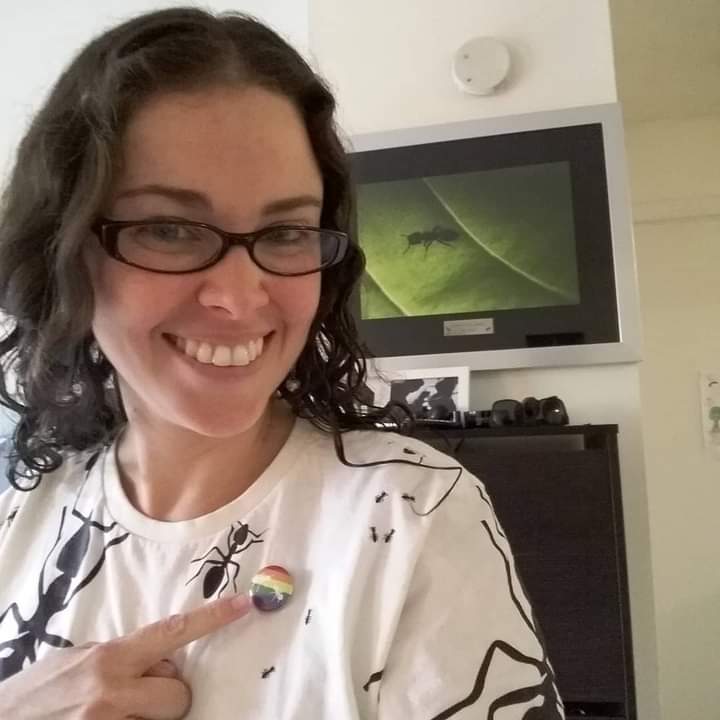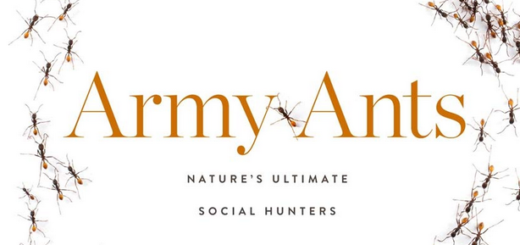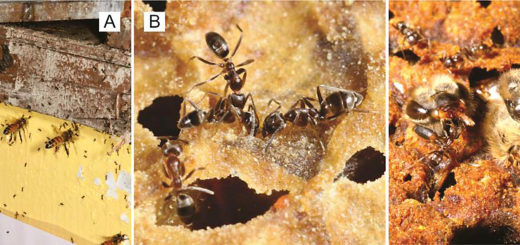Women in Science? Parents in Science? Minorities in Science? “So what”?
In the recent paper “Myrmecology, Gender, and Geography: changing demographics of a research community over thirty years” published in Myrmecological News, Andrea Lucky and colleagues examined author gender ratios and publication rates over the past three decades. They found that the number of female authors in myrmecology has risen and approximately 1/3 of authors publishing about ants during 2008-2017 were women. Despite the presence of more female researchers, there is still a gender gap between men and women. Here, Manuela de O. Ramalho highlights the main points.
A view by Manuela de O. Ramalho

Why is promoting inclusion and diversity in science important? Well, if you still wonder why, this quote is for you: To do quality science, you must be concerned with inclusion and diversity, because “diversity is a driving force of innovation and creativity in scientific research”. This is also the first sentence of the, in my opinion, brilliant study conducted by Lucky et al. (2020) with the title “Myrmecology, Gender, and Geography: changing demographics of a research community over thirty years”.
If you think about myrmecology, gender, and geography, several researchers likely pop up in your head and with them, several of their research papers. And often you don’t even know the researchers in person, but only their papers, and the more papers published, the more known, researchers are. Unfortunately, counting publications is still how we measure part of our productivity, although few of us decided to become a scientist to produce paper after paper like a machine. Importantly, if we want to serve as an example and inspiration for the next scientific generation, this is certainly not the best way to promote science for future generations. We don’t want to be remembered just because we were a machine for producing papers. I think it is better to be remembered for being a scientist who promoted inclusion, who was a good mentor, who made science more accessible, and who was able to produce papers. We need more variety in terms of people as we all have particular histories and unique backgrounds. And we need to work on gender equality. Lucky et al. (2020) took great care in thinking about the next generations of myrmecologists and this should also be an inspiration for every scientist.
Lucky et al. (2020) promote the idea that to determine measures to foster inclusion and diversity, the first step is to recognize ourselves as a group and to identify the deficiencies in our communities and commit to addressing them. In this scenario, the authors of this study analyzed the gender composition of the myrmecology community over the past 30 years, focusing on the particularities of each country.
The paper is carefully written, and the conclusions are well supported and explained, making this contribution one of the most valuable in myrmecology in recent years – in my opinion. The results show that the myrmecological community grew globally. The authors reevaluated the data of myrmecological communities by country to understand their circumstances. This was essential because, while gross domestic product is not related to gender parity in myrmecology, the sociocultural factors, including domestic support for STEM (Science, Technology, Engineering, Mathematics) research, are likely to have the greatest influence in supporting women myrmecologists.
The authors demonstrate that, despite an increase in female researchers over the last 30 years, women are still underrepresented in myrmecology. The results of this study show that the number of female authors that occupy senior positions in myrmecology has significantly increased in the last 10 years but unfortunately not in terms of the annual proportion of women; a result, which is also corroborated by Ramalho et al. (2020). This is very worrying, especially as Lucky et al. (2020) analyzed the singletons publications (an author who published only once) and found that the majority of these are women. This suggests that one problem is failing to retain aspiring researchers, especially women, who start a career in myrmecology.
I wonder how the current situation with COVID-19 will influence this situation? I think that the study by Lucky et al. (2020) is even more relevant in times of a pandemic: Now, gender injustice is even more aggravated, because it is usually the woman who is responsible for household chores and (exclusive) care for the children. With the ongoing crisis, many women have had no other option but to stay home with the children thus often face many more burdens than men face. Supporting female researchers is now – more than ever – paramount in this ongoing pandemic crisis. An urgent call for action is needed to rethink deadlines and career advancement measures so that women (but not only, also early-career researchers, etc.) are not lost in the long run, and thus not allowing this pandemic to pull us into irreparable setbacks.
Lucky et al. (2020) conclude that gender parity will not be achieved by waiting for female myrmecologists to appear and that measures are essential to make the workplace culture more favorable for professional women (see also Figure 3 by Ramalho et al. 2020 for more suggestions). In Ramalho et al. 2020, we also suggested identifying and minimize biases, support women and minorities at all stages of their lives, ensure diversity on all admissions (hiring, promotion, committees), etc. This study by Lucky et al. (2020) also outlines that the next generation of scientists should be more diverse, which could be achieved, amongst other measures, by providing support for different career stages or by improving hiring practices to minimize unintentional biases. Overall, this study highlights that despite ongoing changes, we are far from reaching gender equality, but we also see progress in the right direction. Now go ahead and use this opportunity to read this remarkable paper.
References
Ramalho, M., Martins, C. & Moreau, C.S. 2020: Myrmecology: majority of females only within the colony. – Boletim do Museu Paraense Emílio Goeldi-Ciências Naturais 15: 17-26.





Recent Comments